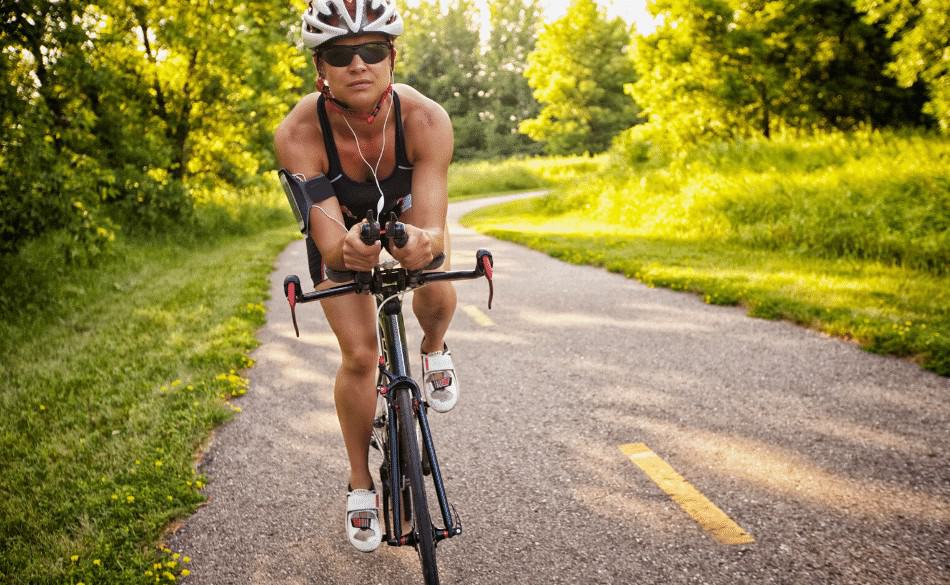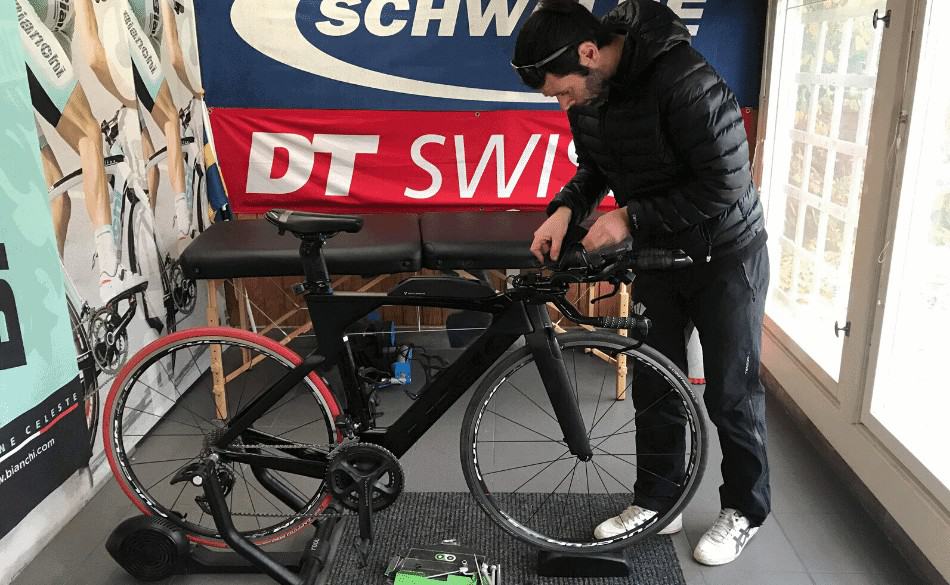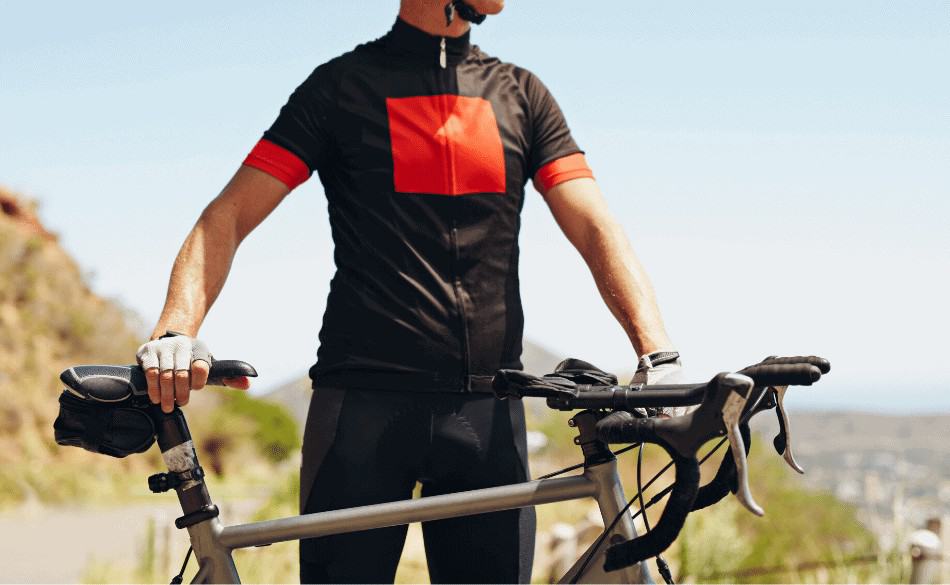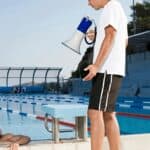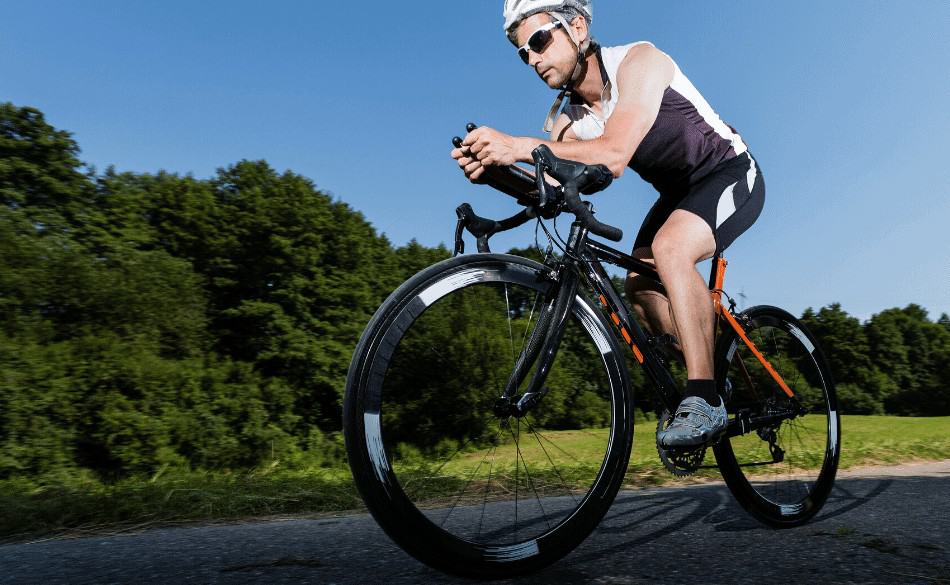
Triathlon Bike Position – UPDATED 2021 – A Complete Guide
Page Contents
Getting into the right triathlon bike position is essential for any triathlete looking to compete in a triathlon. The combination of comfort and the ability to produce power can mean the difference between finishing an event or not at all.
The perfect triathlon bike positions just don’t rely on comfort and power, but also aerodynamics. Focusing purely on aerodynamics for most triathletes will negatively affect your results. This means the more aggressive you fit yourself the less power you will be able to produce. Although you might get faster because of the more aggressive position there is a tipping point where the power lost often outweighs the benefits of the aerodynamic gains.
So finding the correct balance of comfort, power, and aerodynamics is the key to a perfectly balanced bike position. This can be achieved by focusing on some key areas such as:
– Hip Angle
– Cleat Alignment
– Knee Tracking
– Weight Balance
– Saddle Height
– Saddle Fore/Aft
– Geometry
– Frame Size
– Handlebar Position
– Aerobar Position And Angle
– Head Position
– Other Contact Points
These key areas are important in your triathlon bike position to prevent injury and ensure that you can produce power to the pedals.
Often overlooked is geometry and frame size, this plays a vital role in setting the best triathlon position relative to your height, flexibility, and handling of the bike. Also paying attention to all contact points such as hands, saddle, and feet are critical to producing a comfortable position.
When starting out adjusting your triathlon bike positions you should follow a step by step process. Whether you are being fitted by a bike fitter or trying yourself.
Here is an example:
1. Look over your previous fitting history (If any)
2. Understand the reasons why you need to adjust your fit
3. Review your mobility and flexibility. Finding any possible limitations that could affect your position.
4. Begin with the positioning of cleats, shoes, and the saddle.
5. Move into upper body setup through handlebars, stem, and aero bars
6. Test under load and fine-tune 4-5
7. Outside testing for 10 days. Let the body adjust to the position.
8. Fine-tune 4-5
9. Complete setup
While somewhat a simple example, the most important factor is to constantly test under load. This will allow you to fine-tune any adjustments based on body movement. You can even go as much as comparing past power data in a controlled environment, but this should be reserved for the experienced bike fitter.
Bad Triathlon Bike Positions – What You Should Know?
Often bad triathlon bike positioning can be detrimental to your training, speed, and biomechanics.
Some of the key areas in a bad triathlon bike position are:
– Saddle Too Low
– Saddle Too Far Back
– Reach Too Long
– Unnatural Hand Position
– Misalignment of Cleats
– Too Aggressive Position
All of these factors can have serious consequences for your performance. So let us look at some of these consequences:
Saddle too low. This can affect your ability to produce power and overload the quadriceps making it difficult to run off the bike.
Saddle too far back. A saddle positioned too far back will overload the hamstrings and often find yourself sliding forward, adding more weight to the arms, neck, and shoulders.
Too long reach. This will lengthen the bike applying more load to the core to keep you stable, thus pulling your body’s position forward to effectively shorten the length of the bike.
Unnatural Hand Position. An unnatural hand position may produce sore wrists, numb hands, and apply added load to your arms, neck, and shoulders. This forces you to constantly move around on your position.
Misalignment Of Cleats. A large cause of knee problems and an often tight ITB.
Too Aggressive position. Setting up a too aggressive position for your flexibility and mechanics can often result in loss of power. Also tightening up critical areas, such as your neck, back, arms, and shoulders when trying to keep body locked in position.
If any of these problems are occurring in your triathlon bike positions, start with eliminating one problem at a time.
Trying to adjust multiple fitting problems in one go often makes you lose track of what you have moved and the outcome of that adjustment. So stick with one adjustment at a time or follow a simple guide:
1.Identify Issue
2.Make Small Adjustment
3.Test Under Load
4.Evaluate outcome
5.Back to processes 2 to 4
If after making adjustments to your position, you haven’t eliminated the issue, it is best then to look for a dedicated triathlon bike fitter.
Triathlon Bike Seat Position
Setting your triathlon bike seat position is a crucial factor in allowing you to open your hip angle. While most frames often have a steeper seat angle, the position of the seat still plays a vital role.
Opening up your hip angle helps position the knee over the foot, this means you are generating power down to the pedals rather than forward to the pedal. This is often compared to that of running, but a forward and open hip angle makes sure the muscles and joints don’t overwork themselves, thus working in harmony together.
When looking at many triathletes, it is a common sight to see these athletes only using the tip of the saddle. This means the pelvis has no contact point but the question is, is this ok?
Ideally your triathlon bike seat position should not make your pubic symphysis carry the entire load. An aggressive triathlon bikefit will somewhat add more load to that area than that of a road bike position. But limiting the pressure located to the pubic symphysis is still critical and your bike seat position should not entirely rely on knee and ankle angles alone.
Remember when making changes to your seat position you will find that these changes can have large consequences to your entire cockpit and you may need to adjust saddle height, reach, and other factors in the process.
Saddle Fore / Aft Position Triathlon
Your saddle fore-aft position is one of the most important aspects of your triathlon bike fit. This can affect such things as power, muscle load, stability, and pelvis pressure. So getting the right saddle fore-aft triathlon position is a key point in a comfortable and powerful fit.
To measure the fore-aft position of your saddle, place a plumb line directly down from the tip of the saddle towards the crankset. Then measure the distance between the plumb line and center of the crankset. This will give you your fore-aft position.
For many years the theory of Fore-aft was based on KOPS (knee over pedal spindle) but this has been somewhat debunked buy dedicated bike fitters. While still used somewhat by companies in the bike fitting business, KOPS shouldn’t be used as a starting point for triathlon bike positions. Your fore-aft position should be ultimately relying on the stability of the pelvis, opening the hip angle and the power you are able to produce to the pedals.
Often with triathletes the fore-aft position of the saddle is too far forward, often overload their quadriceps and shifting more weight to the front of the bike. Thus making the upper body take the majority of the load to stabilize the body.
Finding the correct fore-aft position is about supporting the sit bones, balancing weight, and not overloading a group of muscles. In any case the muscles (hamstring, quadriceps) should be working in harmony together while the upper body stays relaxed and the pelvis stable.

